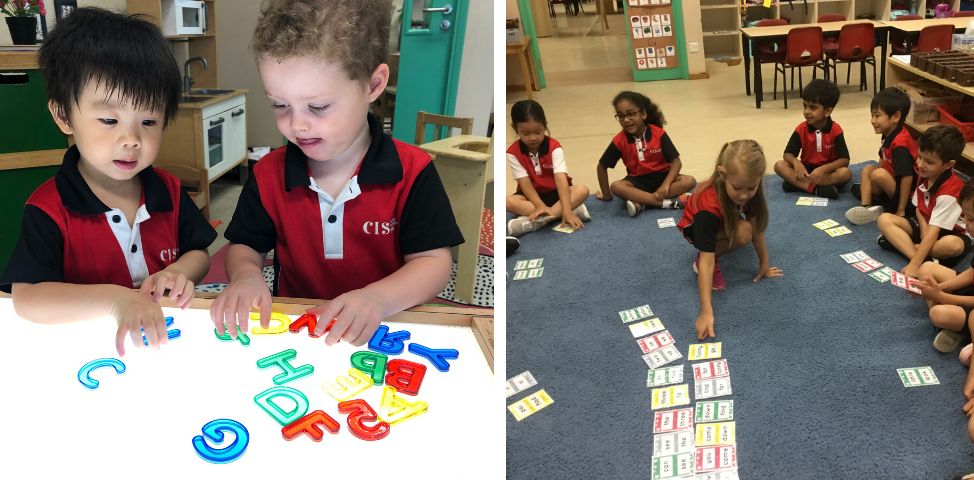Updating CIS's approach to primary literacy.
Meet Emilija S, our primary literacy coordinator. CIS recently updated its approach to literacy,based on the latest research on bilingual learners* and to take into account that some of our student body are non-native English speakers. She talks us through the changes and their benefits.
Why have these changes been implemented in the early literacy programme?
Emerging research* about bilingual and multilingual learners states that students who are learning a language, especially benefit from levelled reading. Multiple studies have concluded that reading instruction needs to be explicit and systematic.
The role of mother tongue
We also need to consider the role of mother tongue in students’ learning. Students who are encouraged to use their mother tongue to process information perform better and have higher achievement. From a psychological standpoint, we want students to bring their whole self to school, not just the English part. If a student is taught how to make predictions while reading in one language, they will be able to do it in the other language. The underlying cognitive skills are transferable to any language.
What are the changes?
The 3 core changes are the allocation of dedicated time to reading and writing; a guided reading programme and the workshop approach to writing.
Dedicated literacy blocks
We now have dedicated literacy “blocks” allocated for all the primary grades which means they have a structured and allotted time to work on these skills every week.
Guided reading programme
Guided reading takes place in small groups of 4 - 6 students which is very similar to coaching. To meet the needs of individual students, we start with diagnostic assessments, which help us determine not just the exact reading level of the student, but also their strengths and areas in need of growth. Using this information, the teacher groups the students in small, flexible groups. The students can then move to different groups based on their growth and needs.
Just like a coach on a sports team doesn’t wait for the players to make multiple mistakes; they go in and instruct in the act of practice. Teachers also give children “tips” on how to improve their reading. For example, a student might not pronounce the final ‘s’ in a word. The teacher will stop the student and say ‘read to the end of the word’.
All teachers and assistants have been trained in using guided reading to support students. We consult with expert Dr. Jan Richardson, the guided reading guru and main researcher from the USA, to support the implementation.
Workshop approach to writing
Workshop approach to writing instruction means a focus on skills not a singular piece of work. We consulted with expert Matt Glover on how best to incorporate this approach. This approach is similar to any other type of workshop. The teacher gives a short mini lesson of about 10 minutes focusing on one particular skill. Students then try to implement this in their writing.

Two key principles apply when using this approach:
We develop the writer, not the writing. Students won’t learn much if the teacher corrects their work because then that writing piece will be great, but the writer will still be poor in terms of skills. We focus on what they could do to improve their writing ability. For example, how to elaborate on what they are saying using “because”. This technique could be used in any writing piece, not just the one the student is currently working on.
Also the teacher believes students, even the youngest ones, are capable of producing writing and seeing themselves as writers. Writing is not viewed as a process where the teacher first needs to teach you everything you need to know, and then and only then, you will be allowed to write one perfect piece.
Students, instead, engage in writing multiple pieces and constantly go back and forth in the same fashion as real-life writers. No real writer sits and finishes one perfect piece from beginning to end, but constantly revises and comes back to it after a while. The key lesson for students is this writer wrote this book, so can YOU!
New resources
In addition, we have brought in fun new resources such as magnetic letters, kidney tables, and boxes with cards so students can engage in literacy-rich activities. The school also purchased over 600 different titles and more than 14,000 guided reading books.
While it has only been six months; both our internal and external assessments are already showing steady growth in students’ literacy ability with this updated approach.
*Schofield, A. & McGeary, F. (2016). Bilingual and Multilingual Learners from the Inside Out: Elevating Expertise in Classrooms and Beyond.